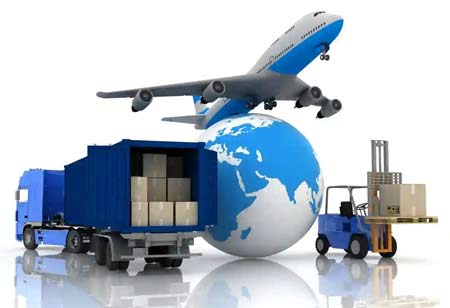THANK YOU FOR SUBSCRIBING
THANK YOU FOR SUBSCRIBING

By
Logistics Transportation Review | Thursday, June 08, 2023
Stay ahead of the industry with exclusive feature stories on the top companies, expert insights and the latest news delivered straight to your inbox. Subscribe today.
Discover how technology is revolutionising supply chains by enhancing trust, transparency, real-time visibility, digitisation, and automation. Blockchain, predictive analytics, digitisation, and robotics are driving operational efficiency and resilience in today's interconnected global economy.
FREMONT, CA: In the present-day interconnectedness of the global economy, supply chains are vital components in the success and resilience of companies across sectors. However, recent discontinuities have opened up vulnerabilities inside the supply chain, further emphasising the requirement for improved stability.
Amidst all the disruptions, technology has risen as a strong tool in constructing an adaptable and robust supply chain, with the ability to keep up with fast-paced advancements and groundbreaking solutions. Companies can eliminate risks and improve operational efficiency, customer satisfaction, and agility by using different types of technologies.
Blockchain for Improved Trust and Transparency
Blockchain technology has garnered a lot of attention due to the potential it possesses to transform supply chain operations. Businesses can generate an immutable and transparent record of every transaction, assuring accountability and traceability when they use distributed ledger technology.
The fact that the transactions are transparent, traceable, and cannot be modified or deleted is largely necessary for industries where product authenticity, provenance, and compliance are critical. Blockchain also enables secure data sharing and cooperation between supply chain partners, decreasing the risk associated with fraud, counterfeiting, and unauthorised access.
Predictive Analytics and Real-Time Visibility
One of the most crucial obstacles in the management of supply chains is the requirement for real-time visibility into demand, logistics, and inventory. Businesses can obtain comprehensive visibility across their supply chains by implementing advanced technologies like Internet of Things (IoT) sensors, cloud-based platforms, and RFID.
Real-time information on production status, inventory levels, and transportation can allow for better decision-making and faster response to disruptions. In addition, predictive analysis can harness real-time and historical data to predict demand patterns, recognise potential bottlenecks, and optimise inventory levels, resulting in decreased lead time and improved flexibility.
Digitisation of the Supply Chain
The concept of digital transformation is a foundational component in building resilient supply chains. Companies can substantially reduce dependency on paper-based documentation, boost data accuracy, and improve efficiency by digitising manual processes. Cloud-based platforms, enterprise resource planning (ERP) systems, and supply chain management (SCM) software allow for smooth integration and stakeholder collaborations.
Electronic data interchange (EDI) enables a quick and standardised exchange of data, eliminating the need for manual data entry and bringing down processing time. Furthermore, the adoption of budding technologies such as artificial intelligence (AI) and machine learning (ML) can encourage companies to analyse large amounts of information, recognise patterns, and create actionable insights for better decision-making.
Automation and Robotics
Automation technologies, especially robotics and autonomous systems, provide enormous potential for improving supply chain resilience. For instance, robotic process automation (RPA) can fine-tune and streamline tasks like invoice verification, order processing, and inventory mediation, freeing up human resources for other important tasks. The use of autonomous vehicles and drones in transportation and last-mile delivery can enhance efficiency and decrease reliance on human labour, optimising the process.
I agree We use cookies on this website to enhance your user experience. By clicking any link on this page you are giving your consent for us to set cookies. More info





